GEO-1 is working better than expected. We did have another thunderstorm, but no loss-of-attitude-control event. New, shorter string seems to do the job.
Last 7 days
Panel voltage
While weather conditions changed daily, all in all GEO-1 works better than planned. The design was for "a couple of hours availability per day". Currently (beginning of May) we get on average around 9 hours of usable power daily.
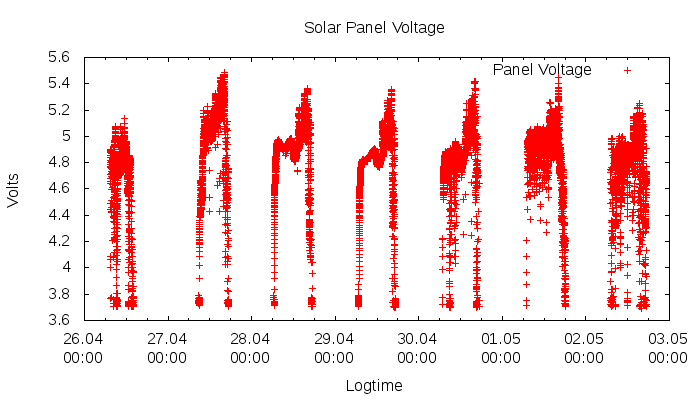
Thermistor
We get quite high temperature fluctuations. While within limits, i might modify GEO-1 slightly by adding a layer of reflective duct tape just to be sure it wont overheat - as well as improve waterproofing by making sure the packaging tape glue wont get unstuck in hot weather.

Uptime
Uptime per day varied, depending on weather conditions. On most days, we get very few low-power resets (not counting the usual reset cycles during dawn and dusk).

A nearly perfect day
On 28th of April, we had a nearly perfect day. Sun was shining strong, without any major clouds. We got over 10 hours of usable power!
Panel voltage
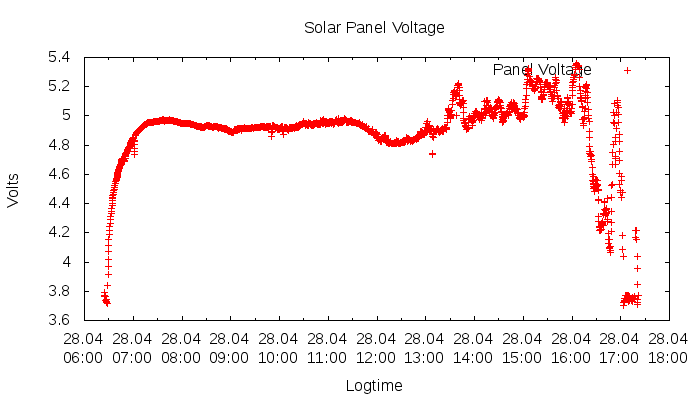
Thermistor
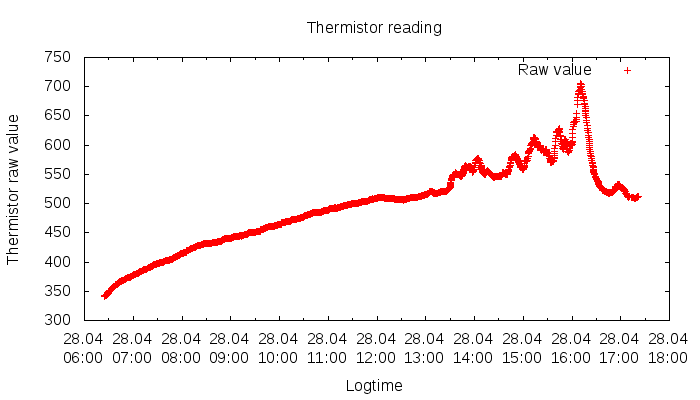
Uptime
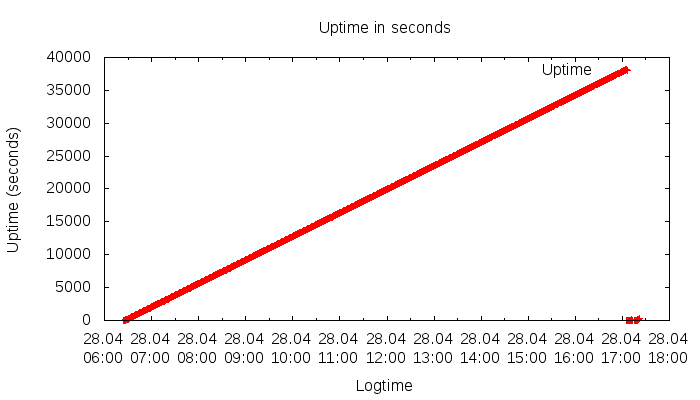
Changing conditions with wind, rain and a thunderstorm
On 2nd of May on the other hand, we had very changing conditions. From overcast to rainy, with winds and a thunderstorm starting in the afternoon. Still, we managed to get quite a few hours of usable energy, although communication was a bit unreliable due to more frequent low power resets. It was also quite a bit colder.
While there were not that many resets, the story would probably be a bit different if GEO-1 would have been under high data relay load. This is something that i will test in the next few days.
Panel voltage
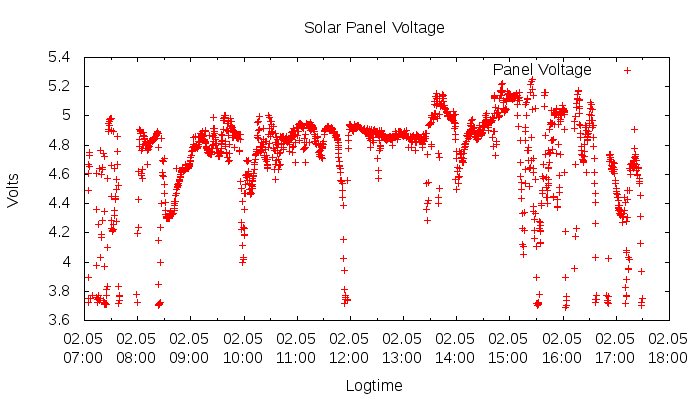
Thermistor
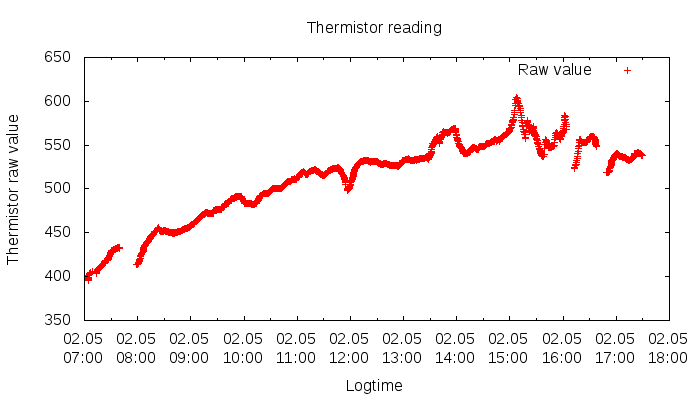
Uptime
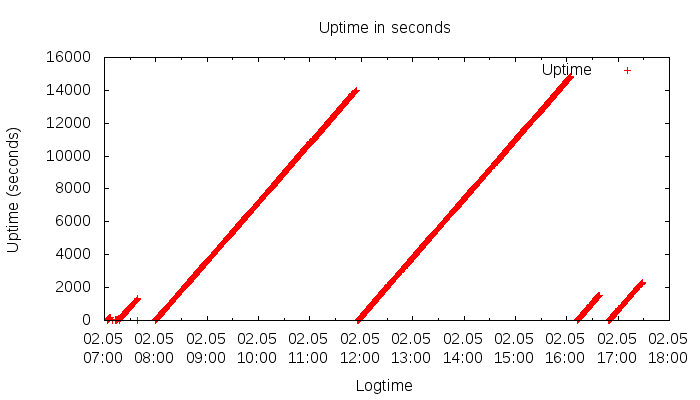
Conclusion
GEO-1 keeps on surprising me with its better-than-hoped power generation/availability. I'm pretty sure GEO-2 will be at least as good, with its slightly larger solar panel.
|


